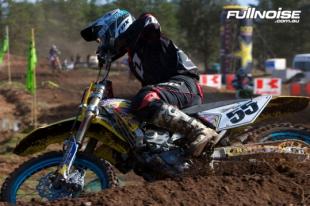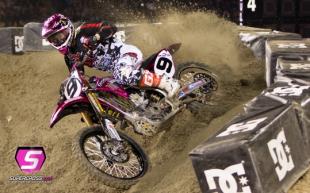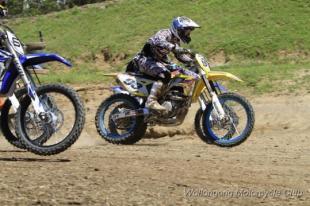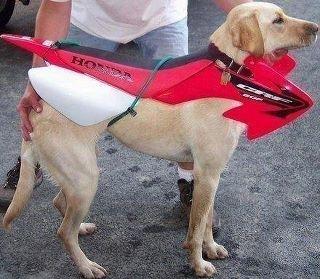
NEW BIKE PREP:Basic New Bike Prep
Check fluids: Drain transmission fluid and refill to proper amount
Be sure the cooling system is full. If adding fluid is necessary, use a 60% water/40% antifreeze mix or a motorcycle specific, ready to use, coolant. If the bike is a two-stroke, be sure to pre-mix the gas to a suitable ratio with a quality premix oil (we recommend Rock Oil, Lucas Oil, Motorex.)
Oil Air Filter: Most bikes are purchased with a dry or inadequately oiled air filter. It is best to oil the filter with a quality foam filter oil (we recommend Rock Oil, Motorex). Apply a thin film of grease around the lip of the filter before reinstalling it. It is also a good idea to check the intake boot for proper fit to the air box and carb.
Set tire psi: Bikes generally come off of the showroom floor with over-inflated tires. Set the tire pressure between 11 and 14psi depending on track conditions/preferences.
Grease headset and linkage: Most bikes are delivered with lightly greased or dry headset and linkage bearings. If not greased properly, these bearings will rust and become notchy after a few washes. Disassembly the headset and linkage, pack the bearings generously with waterproof grease and reassembly. Loctite (blue, not red) and torque the headset nut and linkage bolts to keep them from loosening on the track.
Tighten spokes:The wheels will never be as true again as they are when the bike is new. Find a starting point and tighten the spokes ¼ turn, all the way around. Continue the tightening sequence until the spokes are tight. If done properly, the wheel will remain true and the spokes will stay tight for a long period of time.
Check and Loctite bolts: Grab a T-handle, one size at a time, and check the torque on all external bolts of that size on the bike. Apply Loctite (Blue) to any critical bolts (ex. Headset nut, kick-starter lever bolt, front brake callipers bolts, shock mount bolts, and sub-frame bolts).
Anti Seize Chain Adjusters: Remove the chain adjuster bolts, apply anti-seize to the threads and reinstall them. This prevents them from seizing and breaking off in the swing-arm a few months down the road.
Proper break-in: Breaking in a bike correctly will reduce the chances of engine failure. Warm the engine up slowly until the radiator or cylinder is at normal operation temperature. Shut the engine off until the cylinder is cool to the touch. Repeat this process three or four times, taking care not to over rev or over load the engine. Ride the bike through the gears a few times for 10 – 15 minute secessions using the same precautions. Once again, check over the bike before riding at normal pace.
Read your owner’s manual for safety recommendations and don’t forget to install a bar pad!
REGULAR MAINTENANCE: Recommended 2 Stroke Bike Maintenance

After (1) ride
- Wash bike thoroughly to remove dirt from all moving parts
- Service air filter (clean, rinse with water, let dry, oil & grease around rim)
- Make sure that no dirt has gotten into the air boot
- Change oil (drain all & refill to measurement on side cover)
- Adjust and lube chain
- Check clutch adjustment
- Check spokes
- Check over critical bolts
- Spray pipe (if bare metal) with lubricant including hard-to-reach areas

After (3) rides
- Basic prep (all of above plus the following)
- Clean & grease lever pivots
- Check tire psi
- Clean air box and boot
- Check bolts (sub frame, rear brake master cylinder, steering stem, etc.)

After (5) rides
- Basic prep (all of above plus the following)
- Check brake pad thickness
- Clean and lube throttle assembly
After (40) hours
- Basic prep (all of above plus the following)
- Replace spark plug
- Replace piston assembly
- Clean & grease wheel bearings
- Clean & grease headset bearings
- Check or replace reeds
- Check or replace clutch assembly
This is only a quick reference for riders that do not have any maintenance schedule. We recommend following the detailed schedule in the service manual for a more thorough preparation that will keep your bike in safe and optimum performing condition. Always replace any critical part that shows signs of wear.

TIPS ON LOOKING AFTER YOUR BIKE:
• Always’ wash your bike thoroughly after riding, especially on tracks that have an oil-based dirt, or staining dirt.
*Take extra time on your suspension parts, as this will make them operate more freely if there washed back to brand new condition.
• When washing your rear shock make sure you lift up the rubber bump stop and pressure wash underneath this. This will slow down the start of corrosion that will eventually eat at your chrome shock shaft. Most of the factory mechanics on the USA race teams never forget this important process when washing bikes.
• It is best to all ways record your clicker / adjuster settings on your bike even if you never have to change them. This will help us when you call Holeshot Suspension so we can have an idea of changes or problems you are having.
• Fork bleeders are a good investment cause you should always release the air from your forks at the start of each race day and in between races especially on rough tracks and on hot days. It is a good idea to form a habit of doing this when you are setting your tire pressures for the day.
• When you service your Forks you should also service your shock. The shock is just as important as the forks, it never leaks as bad as your forks but a worn out shock will become springy and be unstable and will definitely fade as the race wears on. Service time on a Rear Shock for a race bike / Enduro bike, should be around the 20 to 25 hour mark.
• Always check and clean your forks are operating smoothly. Dirt can get through the dust seals and build up in the forks bushes and sliders, which will cause stiction in the action. They will feel ‘notchy’ and un-smooth even before your seals start to leak. This problem is common after a mud race and can be easily cleaned up with an “MP Seal Mate” (see online products) or a fork service. (new bushes may be required)
• You must always grease your swing arm and linkages from new with water proof grease and keep them maintained with fresh grease thru out the year to prevent stiction and seizures in the linkage / shock assembly.
NOTE: Even when you purchase a new bike this should be done before your first ride sometimes factory assemblers forget to add extra grease in there.
• Incorrect tire pressures doe’s affect your suspension greatly. Always check the pressure before you ride in the morning and again through out the race day.
Using nitrogen gas in the tires will keep a constant pressure in them no matter what the conditions are. A lot of the US factory teams use this on their bikes.
• After a big crash it is best to check fork / wheel alignment to ensure proper handling and steering before the next race. This is easily fixed in normal cases by loosening and re-tensioning the fork clamp pinch bolts. Purchase a MP Fork Leveller from our Online Products page this will make this job easier.

Fork Seals:
Leaking fork seals are very common in today’s upside down forks. The exposed chrome lower leg running so close to the tire and wheel often results in rocks logs and dirt being fired onto them despite the fork guard’s being in place.
We polish every set of forks we disassemble we also inspect for even the slightest chip in the chrome that could cut your new fork seal. These chips are polished flat back to new condition and cleaned again before assembly. We use top quality seals, and keep both dust and fork seals in stock. This makes fast turn around easy upon request.
To keep your forks working at their best check out some tips below:
- Wash your forks after riding; a simple but effective tip. Make sure not to miss dirt around the front hiding behind the guard.
- Wipe off excess mud after each race or if you stop for lunch out on the trail. A rag and water will easily do the job.
- Never let mud dry out on your fork leg. This dirt will ‘weld’ itself to your chrome fork leg, driving all the dirt up into your forks seals and bushes.
- Use a small flat screwdriver to lever your dust seals down off the fork body when you wash your bike and clean thoroughly. Although it may be too little too late it will get excess dirt out so as it wont affect your forks on your next ride.
Beware of STICKY or STIFF-feeling forks. This notchy seizing feeling is a result of your fork bushes being packed up with dirt. Usually a seal will leak also, but we have come across totally jammed forks with seals still intact. Fork service and possibly new bushes will solve this.


